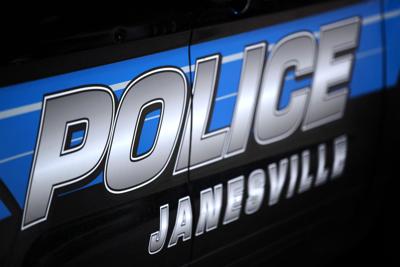JANESVILLE
As the U.S. Justice Department begins to investigate why it took police in Uvalde, Texas, nearly 90 minutes to bring down a gunman in a school shooting, Janesville police say theyŌĆÖre reviewing that response with a critical eye.
In a roundtable with local news media Tuesday, Janesville police said their department, the Janesville School District and partner agencies have a training model for active shooter response that has shifted in recent years from being more rigid and prescriptively tactical to being more flexible, with earlier and more robust communication between police and school officials.
Officials from the Janesville Police Department, the Janesville Fire Department and the Janesville School District discussed during TuesdayŌĆÖs roundtable how local public safety and school leaders would respond to an active shooter situation here.
Of the 698 mass shootings reported across the U.S. over the past year, only three have been at schools. But last week in Uvalde, a single 18-year-old gunman killed 19 students at Robb Elementary School, even as students repeatedly called 911 from inside the school.
The Uvalde shooting ranks as one of the deadliest attacks on a school in U.S. history.
It took state police, who initially waited outside the Texas school, more than an hour to move in on the shooter. That, Texas authorities say, happened in part because some police officers were hesitant to go into the school because they apparently lacked bullet-blocking vests and other protective gear.
Janesville Police Department Lt. Mark Ratzlaff, an active shooter response instructor, said one of the first lessons for police officers as part of their active shooting training, especially in a school situation, is that they must be prepared to act immediately.
Ratzlaff said statistics show that for every 15 seconds during a mass shooting, at least one person is killed. The bulk of those who die are killed within the first couple of minutes.
ŌĆ£The message we need to be thinking about is ŌĆśIŌĆÖm here, now how long do I wait for other resources (tactical gear, officers from other agencies) to get here? I know bad stuff is happening,ŌĆÖŌĆÖŌĆØ Ratzlaff said. ŌĆ£I tell new officers, ŌĆśLook, you signed up for this. You took an oath, you wear a badge. Those people in that building did not do any of that, and theyŌĆÖre looking to you to solve this problem for you.ŌĆÖŌĆØ
Ratzlaff also noted that for every second an active shooter is distracted by police, theyŌĆÖre less likely to kill additional people.
Janesville Police Lt. Mike Blaser said last month, when an employee at Janesville metal shop Precision Drawn Metal allegedly shot and killed a co-worker, an initial responding officer entered the factory building alone without knowing the exact whereabouts of the suspect (the Precision Drawn Metal shooting didnŌĆÖt qualify as a ŌĆ£mass shooting,ŌĆØ a designation reserved for when four or more people are wounded; police located and arrested that suspect within an hour).
One factor that made the recent local shooting response a ŌĆ£big success,ŌĆØ with more people not getting hurt, Blaser said, was that the metal shopŌĆÖs human resources division had a list of the names of all workers on shift who might have witnessed the shooting or known the victim or the shooter.
Janesville School District Superintendent Steve Pophal said all teachers in the school district train on active shooter protocols four times a yearŌĆötwice a year with students. The high schools and middle schools in Janesville also have dedicated resource officers on site who are trained SWAT police. One of the officers is trained in crisis negotiation.
Police and local fire department officials train together to be prepared to coordinate the medical response for anyone injured in a shooting.
Using funding from a recent referendum, the Janesville School District is also now in the midst of upgrading most of its school entryways to require anyone entering during school hours to use a buzzer at the front entrance and then wait inside in a locked vestibule for a school official to escort them inside.
Pophal and Ratzlaff said the school district has one advantage that might not have been in place in Uvalde, Texas: a ŌĆ£direct-connectŌĆØ radio. Janesville schools are equipped with such radios that allow district officials to communicate directly with police in an emergency such as a school shooting.
Blaser said ideally, communication about potential school shootings should happen early. But thatŌĆÖs only possible if parents, teachers and other school officials and police all are watching for signs that a personŌĆöin the most recent example an 18-year-old maleŌĆö poses a risk to themselves or others.
Blaser said the time to stop violent behavior is before it actually occurs. But, too often, he said, that doesnŌĆÖt happen.
ŌĆ£We canŌĆÖt pull that lever to get human services ŌĆ” if we donŌĆÖt know whatŌĆÖs happening. It starts at home,ŌĆØ Blaser said.
















